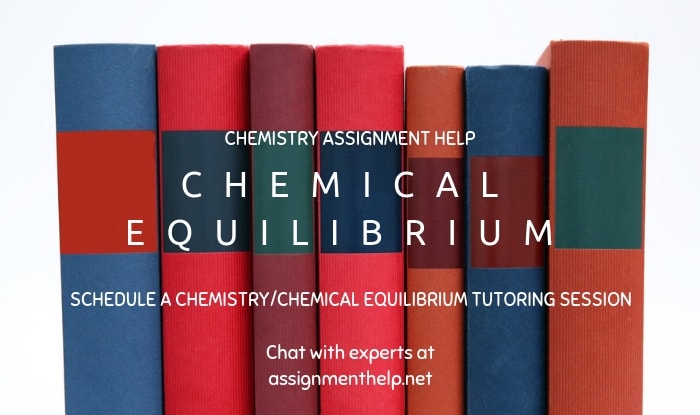Chemical Equilibrium Chemistry Assignment Help
What Is Chemical Equilibrium?
The laws of chemical equilibrium is defined as the direction in which a chemical reaction will proceed, as well as the quantities of reactants and products that will remain after the reaction comes to an end. In most cases, there is a much higher concentration of products or reactants, but the ratio between them remains constant. When a reaction is at equilibrium, you can make several useful predictions and calculations regarding the chemical reaction.
The term “equilibrium” in physical sense is defined as the “no change of state of the body”. The state of the body can be either the state of rest or the state of uniform motion. Such static equilibrium can be further categorized into stable and unstable equilibriums. Chemical Equilibrium is achieved when the rate of the forward and reverse reactions is equal and the concentrations of the reactants and products remain constant.
Chemical equilibrium applies to reactions that can occur in both directions. In a Chemical reaction such as:
CH4(g) + H2O(g) <--> CO(g) + 3H2(g)
The reaction can happen both ways. So after some of the products are created the products begin to react to form the reactants. At the beginning of the reaction, the rate at which the reactants are changing into the products is higher than the rate at which the products are changing into the reactants. Therefore, the net change is a higher number of products.
When the net change of the products and reactants is zero the reaction has reached equilibrium state. The above equilibrium is a dynamic equilibrium. This definition for a dynamic equilibrium is when the amount of products and reactants are constant. (They are not equal but constant. Also, both reactions are still occurring.)
Reversible and Irreversible Reactions
Reactions in which the products can be reconverted back into reactants are known as reversible reaction, i.e. reversible reactions proceed in both directions (forward as well as backward). These are carried out in closed containers.
AgCl + HCl => AgCl + H2
Reactions whose products cannot be converted back to reactants are known as irreversible reaction , i.e. these reactions proceed only in one direction (forward direction). These reactions can proceed to completion. In irreversible reactants, generally one or more of the products separate out as insoluble or volatile species (e.g. AgCl and HCl in the above reaction). An insoluble or a volatile product serves as a so called sink and makes the reaction unidirectional.
Email Based Assignment/Homework Help in Chemistry/Chemical Equilibrium
We are the leading online Assignment Help provider in Chemistry. Find accurate answers to all of your doubts regarding the Chemical Equilibrium in chemistry. We at assignmenthelp.net provide assignment, homework help to the school, college or university level students. Our expert online tutors are available to help you with Chemical Equilibrium. Our Assignment Service is focused on: on time delivery, superior quality, creativity and originality.

To submit Chemistry/Chemical Equilibrium assignments click here


